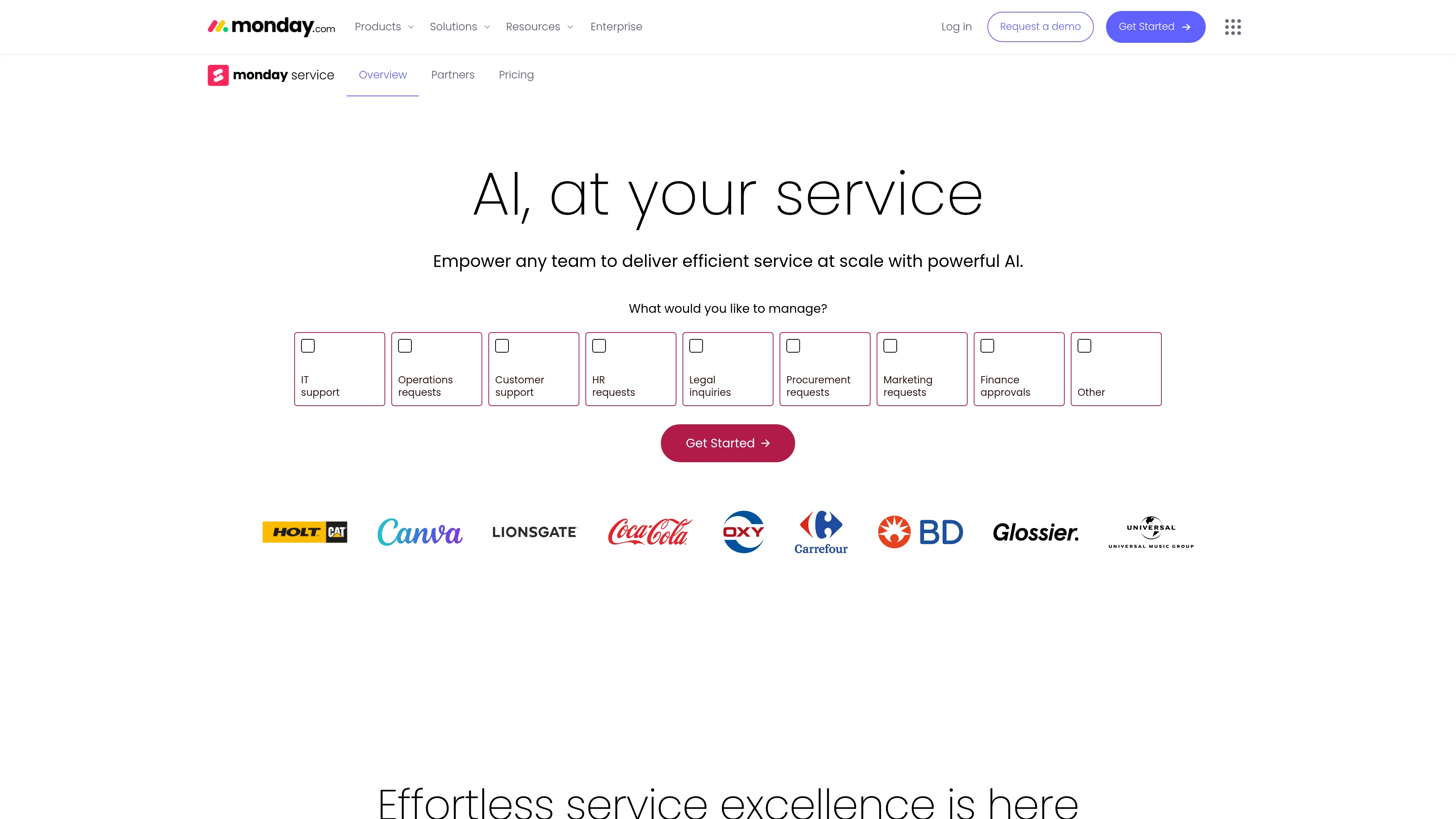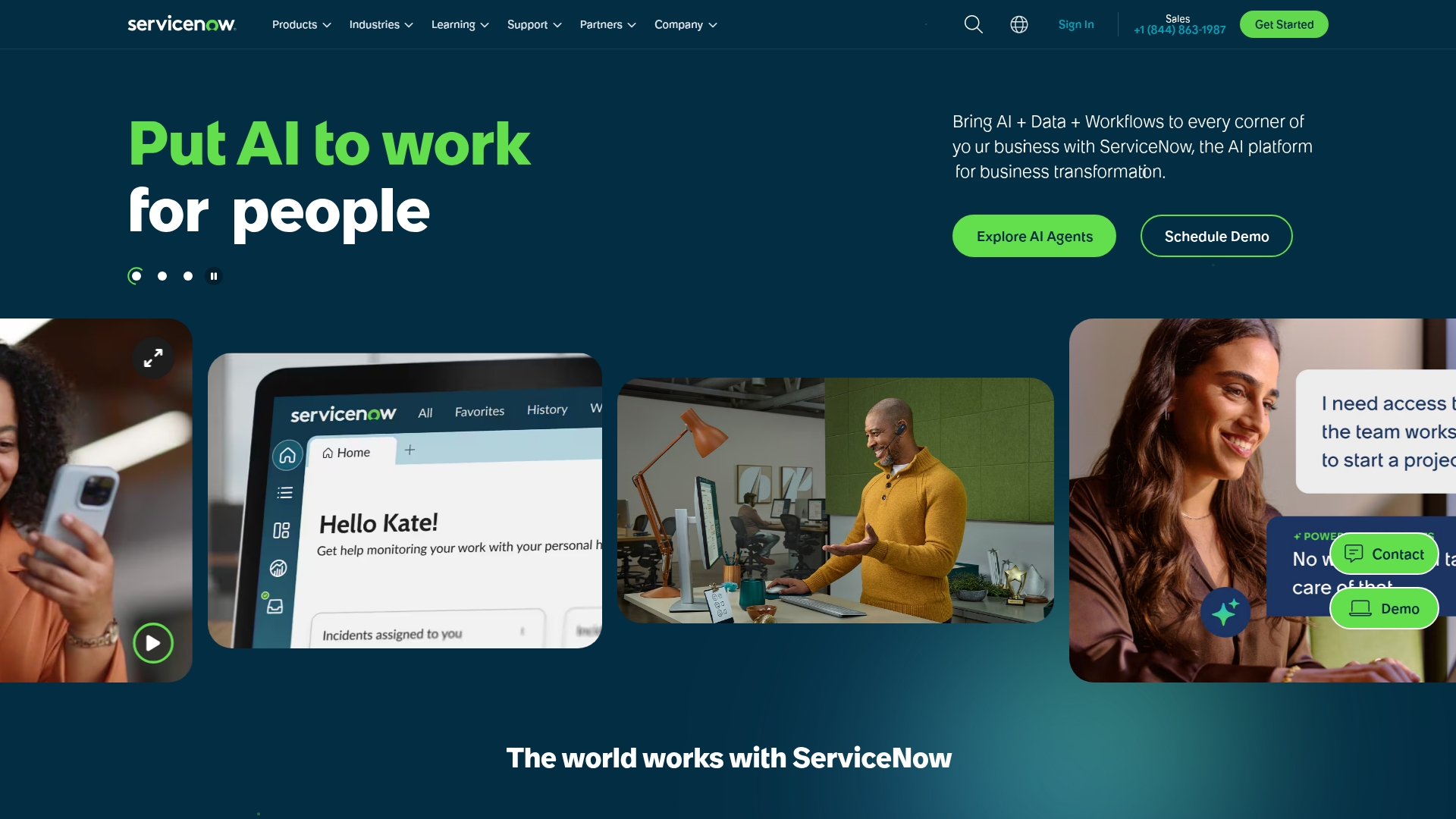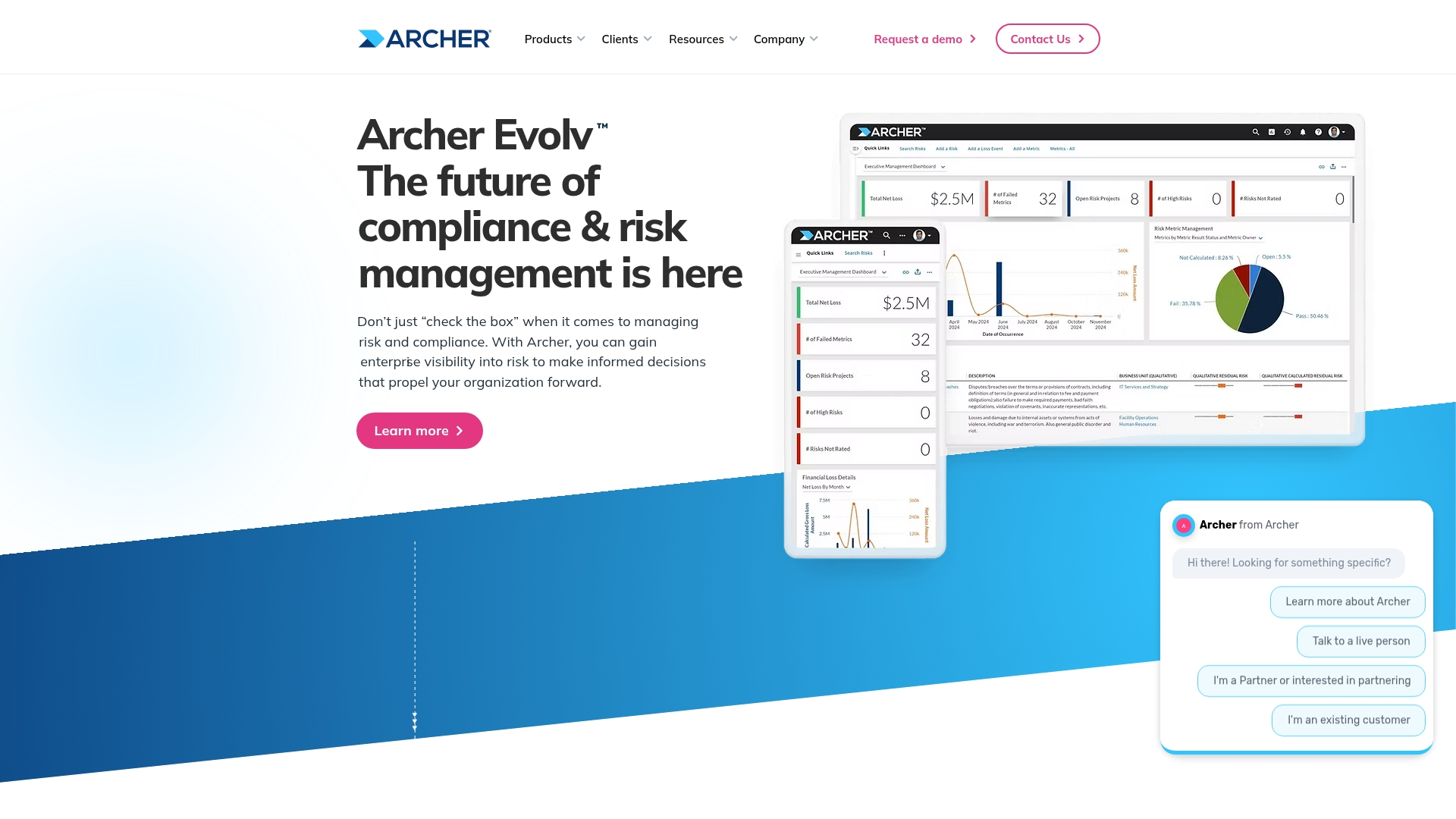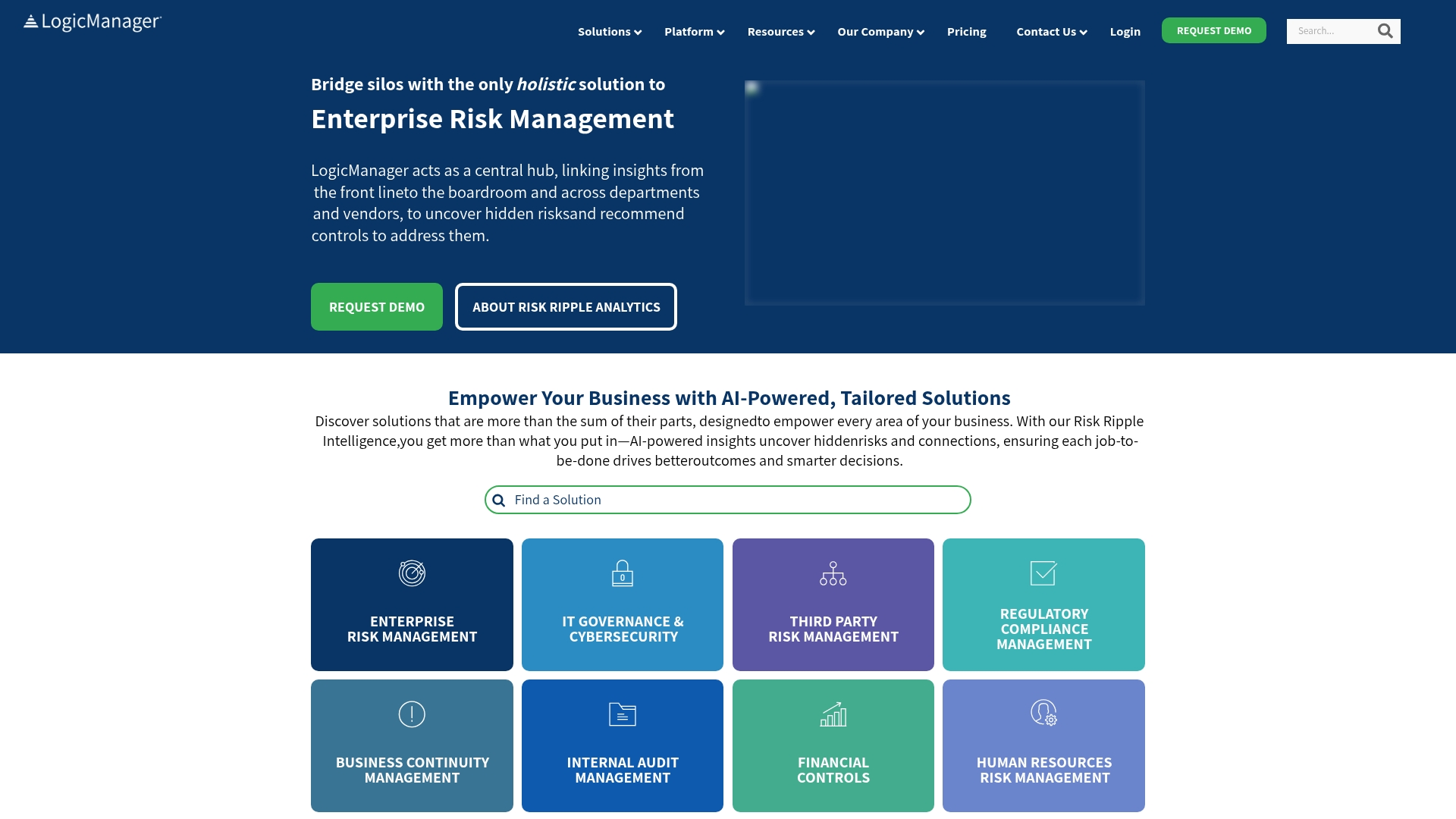Strong organizations plan for disruption and act fast when it happens. Many continuity plans live as static documents that teams rarely revisit. Modern BCM software brings those plans into daily work so owners, steps, and communications stay clear and current.
This guide explains what BCM software does, the features to prioritize, and leading platforms to evaluate. A short five-step plan at the end helps teams move from policy to practice.
Try monday serviceKey takeaways
- Centralize continuity plans, owners, and alerts so teams act on clear next steps.
- Automate incident intake, routing, and follow-ups to cut response time and reduce manual effort.
- Track RTO/RPO, test status, and plan coverage with dashboards that guide decisions.
- Connect incidents with projects and reporting in monday service to manage recovery work in one place
What is BCM software and how does it work?
Business Continuity Management (BCM) software helps teams prepare for, respond to, and recover from operational disruptions. It consolidates risk assessments, continuity plans, contact lists, communication templates, and exercises into one workspace.
Teams use it to define critical processes, set recovery objectives, assign owners, and run playbooks during incidents. Testing and reviews keep content current and highlight gaps to address.
Why every organization needs business continuity planning software
A well-structured continuity program reduces downtime, protects revenue, and strengthens trust. BCM software turns static policies into live workflows that assign ownership, track progress, and keep communication clear.
Automation replaces manual coordination so teams can act quickly and document every step. Real-time dashboards highlight risks, track response speed, and show which functions are operating at capacity. The result is faster recovery and better visibility across departments.
Essential features of modern BCM platforms
Modern BCM platforms make planning and execution faster, clearer, and easier to audit. Prioritize features that support both daily operations and crisis response:
- Business impact analysis for identifying critical processes, dependencies, and recovery targets (RTO/RPO)
- Incident intake and routing with defined roles, SLAs, and notifications
- Playbooks and templates for communication, response, and recovery workflows
- Testing modules that schedule exercises and track outcomes
- Dashboards showing plan coverage, test cadence, and response metrics
- Access controls, audit trails, and integrations with collaboration and IT systems
How BCM software transforms operations
A strong platform organizes continuity work into clear, actionable processes. It maps critical operations, assigns owners, and standardizes response tasks across teams.
Incident data flows into project and service management systems, keeping recovery work visible from start to finish. Dashboards help leaders spot trends, track cycle times, and identify areas for improvement after each test or event.
Best business continuity software solutions for 2025
Modern continuity planning focuses on adaptability and integration. Instead of operating as separate systems, today’s BCM platforms work within existing workflows to connect teams, automate response steps, and keep operations running through disruption.
The leading solutions share a few traits: automation that accelerates decision-making, visibility that improves coordination, and intuitive interfaces that make adoption easy for every department. Each platform offers distinct strengths depending on organizational size, industry, and resilience goals.
1. monday service
monday service unifies business continuity planning, incident response, and risk management in one no-code platform. Teams map critical processes, assign owners, and automate workflows to keep operations running through disruption. Dashboards track recovery progress in real time, giving leaders visibility into every action and outcomef.
The platform’s AI capabilities detect patterns, classify incidents, and surface insights that help teams act quickly and make informed decisions. With customizable templates and cross-department integrations, organizations can plan, test, and improve continuity processes without technical overhead.

Best for: Organizations that want BCM embedded in daily service and project workflows.
Key features:
- Prebuilt templates for plans, communications, and recovery tasks
- Incident intake, routing, SLAs, and status tracking
- Risk registers with mitigation workflows and approvals
- Exercises and post-incident reviews with assigned actions
- Dashboards for RTO/RPO, plan coverage, and response performance
- Integrations with Slack, Teams, Jira, AWS, Zoom, and more
Pricing:
monday service offers flexible pricing plans starting at $26 per seat/month. Every plan includes a free trial and scales by users and features for fast adoption across small teams and enterprises.
Why it stands out:
No-code automation standardizes handoffs, reduces manual effort, and connects incidents with projects and reporting in one place.
Advanced AI features:
- AI automatically classifies incoming incidents by urgency, sentiment, and category to ensure proper prioritization during crisis situations
- Automated ticket routing helps assign BCM-related issues to the right response teams based on predefined criteria and availability
- AI-powered knowledge base pulls relevant continuity procedures and recovery steps directly into agent workflows for faster resolution
Automations:
- No-code automation recipes trigger instant notifications to stakeholders when risk statuses change or incidents escalate
- Pre-built workflow templates automate the entire incident response lifecycle from initial detection through post-incident review
- Enterprise-scale automations support up to 250,000 actions per month (on the Enterprise plan) to handle large-scale BCM operations
Integrations:
- Native API connections sync BCM data with existing enterprise tools like ServiceNow, Jira, and Microsoft Teams
- Pre-built integrations with AWS, Slack, and Zoom enable seamless communication during disaster response scenarios
- Third-party integration platform support through Zapier and Make.com extends connectivity to specialized BCM and risk management tools (may require separate subscriptions)
BCM software features:
- Multi-region data hosting with disaster recovery sites ensures your BCM platform remains operational even during widespread outages
- Comprehensive audit trails and activity logging provide a strong foundation for meeting regulatory compliance requirements, though customization may be needed for highly regulated industries
- Tenant-level encryption and bring-your-own-key (BYOK) options offer enhanced data protection for sensitive continuity plans (available on Enterprise plans as an add-on)
2. ServiceNow
ServiceNow delivers enterprise-level business continuity management through the Now Platform. It connects BCM with IT operations, risk, and crisis response to help large organizations manage disruptions within the same environment used for daily workflows.

Best for: Enterprises seeking deep BCM integration with IT service management and operational data.
Key features:
- Business impact analysis with automated recovery targets linked to CMDB records
- Crisis command center for centralized incident coordination and communication
- Mass notifications across multiple channels for rapid stakeholder updates
- Plan testing and simulation tools for ongoing preparedness
- Built-in reporting for tracking response metrics and compliance
Pricing:
Pricing is available upon request. Plans vary by organization size and modules, such as Business Continuity Planning, Crisis Management, and Operational Resilience.
Considerations:
- Implementation complexity can be lengthy and resource-intensive for organizations
- Potential for alert fatigue due to high levels of automation and notifications
3. Fusion Framework System
Fusion Framework System is a Salesforce-based platform for operational resilience and continuity management. It brings together risk, continuity, and crisis workflows in one data-driven environment, giving enterprises a unified approach to resilience.

Best for: Organizations operating on Salesforce that need connected continuity, risk, and crisis programs.
Key features:
- Automated conversion of continuity plans into structured, actionable data
- AI-powered guidance through the Resilience Copilot feature
- Dependency mapping to visualize operational and supply chain relationships
- Risk dashboards for performance monitoring and reporting
- Workflow automation for recovery tracking and approvals
Pricing:
Pricing is customized. Fusion Risk Management provides quotes based on company size, configuration needs, and deployment scope.
Considerations:
- Steep learning curve for administrators requiring significant technical knowledge to fully utilize the platform’s extensive capabilities
- Complex implementation process that can be time-consuming and may require substantial support to optimize system configuration
4. Archer Business Resiliency
Archer Business Resiliency integrates BCM into its governance, risk, and compliance (GRC) suite. It connects continuity, risk, and incident response workflows, helping enterprises manage resilience and regulatory requirements in one place.

Best for: Large enterprises managing interconnected BCM, risk, and compliance functions.
Key features:
- Enterprise risk integration linking BCM, incident management, and third-party governance
- Detailed business impact analysis and dependency mapping
- Automated workflows for plan development, testing, and review
- Centralized reporting and documentation for audits and performance tracking
- Scalable architecture for multi-entity organizations
Pricing:
Archer offers custom enterprise pricing. Packages typically include BCM, risk management, and audit reporting modules.
Considerations:
- Complex setup and configuration may require ongoing IT support
- Costs can be high for smaller organizations or those with limited GRC needs
5. LogicManager
LogicManager combines business continuity and enterprise risk management in one platform. It provides a risk-based approach to BCM with tools for mapping dependencies, defining recovery objectives, and coordinating response activities across teams.

Best for: Mid-sized to large organizations adopting an enterprise risk–driven continuity strategy.
Key features:
- Risk Ripple Intelligence that visualizes cascading disruption impacts
- Centralized business impact analysis with automated RTO and RPO tracking
- Role-based permissions for internal and external stakeholders
- Built-in reporting and dashboards for performance tracking
- Advisory services and onboarding included with subscriptions
Pricing:
LogicManager uses a value-based SaaS model with customized quotes. Packages include licensing, onboarding, and advisory services, with discounts available for multi-solution bundles.
Considerations:
- Reporting functionality has a steep learning curve that requires additional training for effective use
- Initial setup and configuration can be complex, requiring dedicated time from internal teams to meet specific organizational requirements
5 steps to strengthen your business continuity plan
A strong continuity program starts with structure. These 5 steps turn planning into an ongoing practice that builds confidence and keeps teams ready for any disruption.
Step 1: Assess your current state
Start with what you already have in place. Collect existing plans, contact lists, and response procedures from across departments. Identify what’s current, what’s outdated, and where responsibilities overlap. This creates a factual baseline to build from.
Step 2: Define your goals
Set clear recovery targets, timelines, and responsibilities. Establish what success looks like for your organization — whether that’s meeting regulatory requirements, achieving faster recovery times, or protecting critical services. Align every objective to measurable outcomes.
Step 3: Choose the right platform
Select a system that’s easy for teams to adopt and use under pressure. Prioritize visibility, automation, and integration with your existing tools. A platform that connects risk, incidents, and recovery tasks reduces manual coordination and keeps everyone aligned.
Step 4: Configure and customize
Import existing data, assign roles, and adapt workflows to fit how your team operates. Simplify recurring actions with automation, templates, and alerts. A platform that mirrors your structure helps teams act faster and keeps processes consistent across every department.
Step 5: Train and test regularly
Run exercises to validate your plan and build confidence across the organization. Use real scenarios to clarify roles and test recovery times. Capture lessons learned, refine workflows, and repeat the process to strengthen response readiness.
Build continuous resilience with monday service
Operational resilience depends on how well teams respond, not how often they plan. monday service embeds continuity management directly into daily workflows so planning, response, and reporting happen in one place.
The platform connects service tickets, incidents, and recovery projects in a shared workspace. AI-driven insights detect potential risks early, recommend actions, and surface real-time progress data. Teams act faster, communicate clearly, and maintain visibility across every stage of response.
Flexible drag-and-drop tools make it easy to customize workflows, assign roles, and update plans without code. Every process, owner, and status stays visible—helping organizations stay ready and adaptive as needs evolve.
Try monday serviceFAQs
How does BCM software help meet regulatory or audit requirements?
BCM platforms centralize documentation, track testing history, and record every change to plans and processes. These audit trails simplify compliance with frameworks like ISO 22301, SOC 2, and industry-specific continuity standards.
What metrics should teams track to measure continuity performance?
Key metrics include response time, recovery time objectives (RTOs), plan testing frequency, incident resolution rate, and downtime cost avoidance. Tracking these data points helps organizations demonstrate measurable resilience improvements over time.
How often should continuity plans be reviewed or tested?
Most organizations review plans quarterly and conduct at least one live exercise per year. High-risk industries or distributed teams may test more frequently to reflect operational or regulatory needs.
Can BCM software support third-party and supplier risk management?
Yes. Many platforms extend continuity management to external partners, capturing vendor dependencies, response commitments, and risk impact across the supply chain.
What are common challenges during BCM software implementation?
Teams often underestimate data preparation and cross-department collaboration. Starting with a clear owner, defined scope, and phased rollout helps reduce complexity and accelerate adoption.
How does AI improve business continuity management?
AI-powered platforms can classify incidents by severity, detect emerging risks, and recommend recovery steps based on historical data. This enables faster response and more informed decision-making.
 Get started
Get started 
